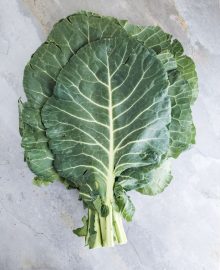
With the amount of processed and packaged foods increasing everyday in our supermarkets, who’s to say what parents should be feeding their children? Most parents run into the food store and quickly grab processed, packaged snacks made with alarming additives and chemicals. If these parents took a minute to glance at the ingredient list, I assure you they would be shocked and return the item back on the shelf. Do parents know what additives and chemicals these products are dumping into our children’s bodies?
As I have mentioned previously in prior posts, we must stick to the outer layers of our food stores and not wander the dangerous inner isles. The outer layers are where we will find our fresh fruits and vegetables, which are loaded with vitamins, minerals, antioxidants, and phytochemicals for our children’s growing bodies. Parents need to incorporate more of these fruits and vegetables into their children’s meals and snacks. Moreover, parents should set a good example for their children by incorporating a fruit and vegetable such as baby carrots and broccoli or a sliced apple on the table with each meal. This simple effort will make a noticeable difference in their children’s diets as well as their health. If children are brought up in a healthy eating environment, they are more likely to continue eating healthy throughout their lives leading to long term health.

Findings in the March 2009 Journal of the American Dietetic Association were quite shocking. For instance, most children consume too much juice; juice makes up about 40% of kid’s fruit intake. Moreover, French fries are the most common type of vegetable children eat. Fries account for about 1/4 of children’s vegetable intake.
Parents should eat plenty of vegetables, themselves, as role models. If children see their parents eating the veggies, they will be more likely to eat the veggies as well. Continually exposing children to fruits and vegetables will familiarize them as they grow accustomed to the taste. Remember, however that their palate is sensitive; their taste buds are more sensitive than ours. Therefore, vegetables that are bitter to us, may not get such a great reaction from them. In most cases, you will find that kids would rather eat veggies that are crunchy rather than mushy and soft. Make it a priority to get your children involved- let them grow their own vegetables at home or let them pick out the vegetables in the store. This will ensure that they feel involved in the process and they will be more likely to try the vegetables at meal time. When you are serving meals, make sure to serve the same meal to everyone. Do not decide to make something special for a picky child because this will only encourage them to continually eat that way. If you prepare healthy food for everyone, they are going to have to eat this food. Giving into them will only cause future problems.

A great way to add vegetables to your child’s foods is to incorporate them into their favorite foods! If you find foods that your children already enjoy eating, such as smoothies, muffins, yogurt, etc you can easily add fruits or vegetables. Remember that fruit snacks, even those made with ‘real’ fruit, fruit drinks and other artificial fruit snacks do not count as a serving of fruit.
A few tips to incorporate fruits and veggies into your child’s snacks and meals:
- Make Your Own Tacos with vegetable toppings
- Spaghetti with Veggie-balls (You can incorporate veggies into the meat or make vegetarian balls)
- Banana or Zucchini muffins (you can add dried fruits as well)
- Make homemade trail mix with dried fruits, cereal and nuts
- Add berries and bananas to cereals (puree bananas into oatmeal)
- Mix chopped fruit or dried fruits into yogurt
- Mix squash, broccoli, spinach, and peas into homemade whole wheat macaroni n’ cheese
- Puree cauliflower or squash into mashed sweet potatoes
- Make a smoothie and add fruits instead of juice
- Set out hummus, guacamole and salsa with raw vegetables for snacking
- Serve “Ants on a Log” by spreading organic peanut butter onto celery sticks and top with raisins
- Make your own Vegetable Whole Wheat Pizza- kids can add numerous different vegetable to their personal pie. Supply them with the dough and sauce and let them top
- Add vegetables to family casserole dishes
- Prepare vegetable-based soups (chicken spinach chickpea soup instead of chicken noodle)
- Make veggies interesting by serving them shredded or julienned
- Incorporate spinach, blueberries, oats, and wheat germ into your whole wheat brownie recipe

Perhaps the best advice is for parents to be positive role models. If kids are regularly served a variety of fruits and veggies and watch their parents enjoy them often, they are more likely to eat fruits and veggies as they grow older. Remember, be patient…kids will slowly become accustomed to the new fruit and veggie tastes.


















Love this post! I don’t have super picky kids, but sometimes its still hard to get them to eat enough veggies. Thanks for all of the great info and tips!
Love Peanut Butter & Co flavors and natural ingredients! Hope I win!
Great post!
This made me think of the huge study that came out in NYT today, linking obesity rates among high school students with the proximity of fast food restaurants. Packing the kids’ lunch would be so beneficial!
If you’re interested:
http://www.nytimes.com/2009/03/26/health/nutrition/26obese.html?_r=2&ref=health
🙂
Thank you for your comment; great article from the NYT…thank you so very much for posting…hope you are enjoying my blog!
Best,
The Healthy Apple